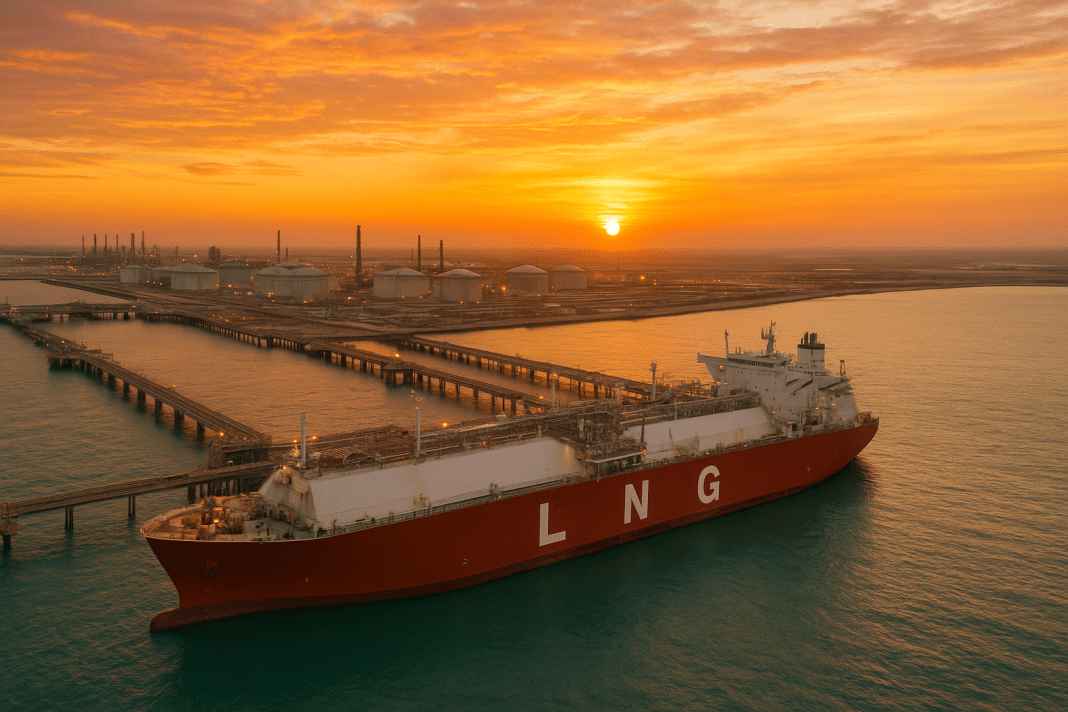Qatar is making one of the boldest moves in the global energy market by planning to double its liquefied natural gas (LNG) production by 2030. This expansion is not only about boosting business. It is also a strategic way to secure a powerful place in world energy. By aiming to reach 142 million tons per annum (mtpa), Qatar is preparing to supply nearly 40% of all new LNG entering the market by the end of this decade.
Geopolitical Neutrality and LNG as a Strategic Weapon
What makes Qatar stand out is its unique geopolitical position. Unlike some other energy-rich countries, it does not get deeply involved in conflicts around the region. This neutrality allows it to sell gas to both Western and Asian countries without facing major political barriers.
For example, Qatar signed a long-term deal with Germany to supply 2 million mtpa of LNG for 15 years. This agreement became even more important after Europe faced gas shortages following the crisis in Ukraine. At the same time, Qatar signed another deal with Kuwait for 3 million mtpa, and it has plans to supply Syria through Jordan. These moves highlight how the country can work with partners in very different regions while keeping supply lines steady.
✈️ Qatar’s $400M Jet Gift Sparks White House Fury—Air Force One Deal Caught in Political Crossfire
One more key factor is shipping. Qatar has managed to make its LNG exports less dependent on the Strait of Hormuz, a narrow sea passage that has often been at the center of geopolitical tensions. Instead, it uses routes from its northern coast in the Arabian Gulf. This adds resilience to its supply chain, ensuring that its gas can keep moving even when regional tensions rise. To support this, Qatar already operates a fleet of about 70 LNG carriers, with another 128 under construction. This makes it one of the largest LNG fleets in the world.
Infrastructure and LNG Cost Advantage
The backbone of this expansion is the North Field, which is the world’s largest natural gas field. Qatar is investing about $82.5 billion into its development. The project is being carried out in phases, with North Field East (NFE), North Field South (NFS), and North Field West (NFW) adding to the total capacity. Through this expansion, production will grow from the current 77 mtpa to 142 mtpa by 2030.
Cost efficiency is another major advantage for Qatar. It produces LNG at an estimated cost of just $0.3 to $0.5 per million British thermal units (mmBtu). This is among the lowest in the world, making Qatari LNG highly competitive compared to other producers such as the United States or Australia. This cost edge allows it to sell LNG at attractive prices while still maintaining healthy profit margins.
Gazprombank Sanctions: EU Mulls Luxembourg Solution for Gas Payments
Qatar is also investing heavily in export infrastructure. Around $45 billion is being spent on ports, vessels, and logistics to ensure it controls its own supply chain. This vertical integration means the country does not have to depend much on third-party facilities, which can sometimes be vulnerable to political or economic risks.
In addition, projects like the expansion of the Ras Laffan export terminal and the construction of the Golden Pass terminal in Texas further strengthen its global reach. By building and controlling its own infrastructure, Qatar ensures it can deliver LNG reliably to growing markets, especially in Asia.
Investment Opportunities and Associated Risks
Qatar’s LNG growth opens up many indirect opportunities for investors around the world. While direct investment in Qatar’s state energy company is not currently possible, global companies that have partnered with Qatar stand to benefit. Major international energy corporations hold stakes in the North Field East project, linking their performance to Qatar’s expansion.
Shipping and logistics firms are also positioned to gain. Companies that manage or operate LNG carriers are expected to benefit from Qatar’s growing fleet. The addition of more than 100 new LNG vessels means higher demand for chartering, shipbuilding, and fleet management services.
Pentagon confirms Iranian missile hit key US base in Qatar — geodesic dome destroyed
For investors who prefer broader exposure, natural gas-focused exchange-traded funds (ETFs) provide another route. These funds include shares of companies engaged in LNG production, shipping, and infrastructure, allowing investors to spread their risk across the sector.
However, the expansion also carries some risks. The possibility of global LNG oversupply could put pressure on prices, especially as the United States and Australia also increase their production. Regional tensions in the Middle East could indirectly affect energy markets, even if Qatar itself remains neutral. To balance these risks, some investors look at energy sector ETFs or even gold as hedging options during uncertain times.
